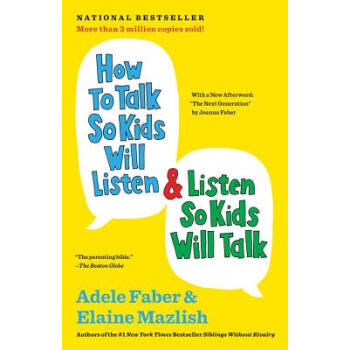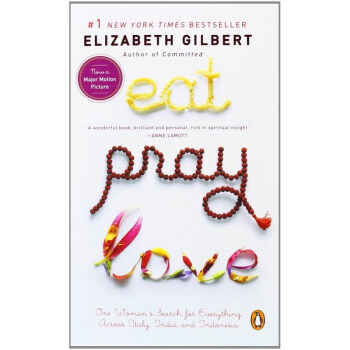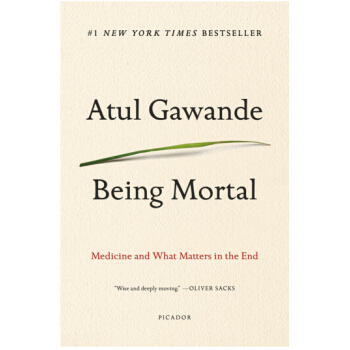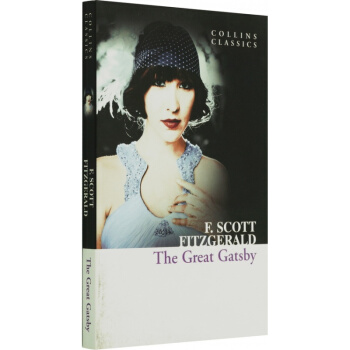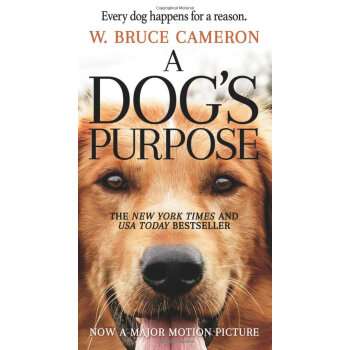![The Atlas of Middle-Earth (Revised Edition) 英文原版 [平装]](https://pic.windowsfront.com/19233627/rBEGD0-jZSUIAAAAAAA8CukntqIAAAu7AED7lsAADwi568.jpg)

具体描述
内容简介
Karen Wynn Fonstad's THE ATLAS OF MIDDLE-EARTH is an essential volume that will enchant all Tolkien fans. Here is the definitive guide to the geography of Middle-earth, from its founding in the Elder Days through the Third Age, including the journeys of Bilbo, Frodo, and the Fellowship of the Ring. Authentic and updated—nearly one third of the maps are new, and the text is fully revised—the atlas illuminates the enchanted world created in THE SILMARILLION, THE HOBBIT, and THE LORD OF THE RINGS. Hundreds of two-color maps and diagrams survey the journeys of the principal characters day by day—including all the battles and key locations of the First, Second, and Third Ages. Plans and descriptions of castles, buildings, and distinctive landforms are given, along with thematic maps describing the climate, vegetation, languages, and population distribution of Middle-earth throughout its history. An extensive appendix and an index help readers correlate the maps with Tolkien's novels. This atlas is the most complete and authoritative guide to Tolkien's world containing seperate two color maps and exlplanatory text relating to Tolkien's works.作者简介
J.R.R. Tolkien (1892-1973) is the creator of Middle-earth and author of such classic and extraordinary works of fiction as The Hobbit, The Lord of the Rings, and The Silmarillion. His books have been translated into more than fifty languages and have sold many millions of copies worldwide.精彩书评
The publishing world is full of Tolkien spinoff products, some trivial and ephemeral--but some, like this thoroughly researched atlas, are genuinely classy. Karen Wynn Fonstad is a qualified geographer and cartographer who first mapped Middle-Earth in 1981 and has since added much new detail based on those endless volumes of drafts, abandoned passages, alternative versions, and laundry lists published since Tolkien's death. She fills in gaps and details in the familiar Third Age maps from The Hobbit and The Lord of the Rings, goes back in time to map Middle-Earth's First and Second Ages, and reconstructs the route and timescale of every important journey in the stories. There are local maps of key places like the Mines of Moria, Lothlorien, Isengard, Minas Tirth, the Tower of Cirith Ungol, and the volcanic Mount Doom. War maps cover the saga's notable battles, up to the hopeless last stand at Mordor gate and the tiny later skirmish known in Shire records as the Battle of Bywater. Thematic maps show Middle-Earth's distribution of climate, geological features, vegetation, people, and (most importantly to Tolkien) languages.... It's all done tremendously seriously and would make a fine gift for enthusiastic Tolkien fans, except that they'll have bought it already. --David Langford, Amazon.co.uk --This text refers to an out of print or unavailable edition of this title. The publishing world is full of Tolkien spinoff products, some trivial and ephemeral--but some, like this thoroughly researched atlas, are genuinely classy. Karen Wynn Fonstad is a qualified geographer and cartographer who first mapped Middle-Earth in 1981 and has since added much new detail based on those endless volumes of drafts, abandoned passages, alternative versions, and laundry lists published since Tolkien's death. She fills in gaps and details in the familiar Third Age maps from The Hobbit and The Lord of the Rings, goes back in time to map Middle-Earth's First and Second Ages, and reconstructs the route and timescale of every important journey in the stories. There are local maps of key places like the Mines of Moria, Lothlorien, Isengard, Minas Tirth, the Tower of Cirith Ungol, and the volcanic Mount Doom. War maps cover the saga's notable battles, up to the hopeless last stand at Mordor gate and the tiny later skirmish known in Shire records as the Battle of Bywater. Thematic maps show Middle-Earth's distribution of climate, geological features, vegetation, people, and (most importantly to Tolkien) languages.... It's all done tremendously seriously and would make a fine gift for enthusiastic Tolkien fans, except that they'll have bought it already. --David Langford, Amazon.co.uk - ( )Tolkien loved maps and geography played a great importance in his books. In the paperback revision of a hardcover that is out of print, cartographer Fonstad here details that aspect of these stories. Copyright 2001 Reed Business Information, Inc. ? (Library Journal )前言/序言
用户评价
拿到这本《中土世界地图集》(修订版)的平装原版,感觉就像是解锁了整个中土世界的密钥。这本书的设计,无论是排版还是纸张的触感,都透着一股扎实的匠人精神。它不是那种一眼惊艳的华丽,而是一种越品越有味道的内敛。我尤其喜欢它那种严谨的态度,每一条河流,每一座山脉,都仿佛有着自己的生命和故事。在阅读托尔金原著时,我常常会因为对地理概念的模糊而感到遗憾,而这本书的出现,恰好弥补了这一空白。它就像一本活的历史教科书,让你能够清晰地看到埃兰迪尔的剑是如何插入白城的,恶龙史矛革是如何盘踞在孤山的。这种具象化的体验,极大地增强了阅读的沉浸感。这本书的平装版本,更加适合日常翻阅,我可以随时随地把它带在身边,让它成为我中土世界探索之旅的忠实伴侣。它的存在,让那些曾经只存在于文字中的遥远国度,变得触手可及。
评分哇,终于拿到这本《中土世界地图集》(修订版)的平装原版了!拿到手的那一刻,简直就像是打开了一个通往另一个世界的宝箱。纸质手感温润,那种熟悉的、略带陈旧的油墨香气扑鼻而来,瞬间把我拉回了当年沉浸在托尔金史诗中的时光。这本书不仅仅是一本地图集,它更像是一个忠实的向导,一个能够带领你穿越中土大陆每一个角落的灵魂伴侣。封面设计简洁却又充满力量,一眼就能感受到它的历史厚重感,仿佛封面之下就隐藏着甘道夫挥舞魔杖的轨迹,或者霍比特人轻盈的脚步声。拿到手里沉甸甸的,这分量不仅是纸张的重量,更是其中蕴含的无数故事、传说和地理细节的集合。我迫不及待地想要翻开它,去细细品味那些曾经只在文字中描绘过的山川河流、古老森林和壮丽城邦。作为一名资深的中土迷,拥有这样一本精心编排的地图集,简直是如虎添翼,能够让我在重读《魔戒》和《霍比特人》时,拥有更直观、更深入的理解。它的存在,让我感觉自己仿佛也成了维拉的子民,或者至少是某个勇敢的旅行者,即将踏上寻找失落宝藏的征程。
评分当这本《中土世界地图集》(修订版)的平装原版静静地躺在我的书桌上时,我感受到了一种来自遥远时代的召唤。这本书的质感,从封面到内页,都散发着一种低调而深刻的魅力。我喜欢它那种不事张扬的美学,每一处细节都仿佛经过深思熟虑,只为更好地呈现中土世界的宏伟与细致。作为一名对托尔金文字世界有着执着追求的读者,这本书的出现,无疑是一份珍贵的馈赠。它让我得以将那些只存在于想象中的地理轮廓,转化为清晰可见的图景。我可以想象,有多少个夜晚,托尔金先生在构思这些地图时,是怀揣着怎样的热情与严谨。这本书不仅仅是纸张和油墨的集合,更是一份承载着无数梦想与故事的纪念碑。它的平装版本,让这份宏大的世界观,变得触手可及,仿佛随时可以拿起它,踏上一段新的冒险旅程,去亲自丈量那片令人神往的土地。
评分这本《中土世界地图集》(修订版)的平装版,简直是为那些对托尔金笔下世界怀有深切情感的读者量身定做的。它不仅仅是一堆纸,而是一份沉甸甸的诚意。当它静静地躺在我的书架上时,我总忍不住会去抚摸它的封面,感受那份质朴的触感。对于我来说,它代表的不仅仅是地理信息,更是无数个在书中度过的夜晚,无数次在脑海中勾勒出的宏伟景象。我喜欢它那种不张扬的风格,没有华丽的装饰,但每一个细节都透露出制作者的用心。它就像一位沉默但博学的向导,在你需要的时候,总是能为你指明方向,让你在中土世界的广袤无垠中不再迷失。我常常会把它放在手边,在阅读托尔金的作品时,随时翻开它,对照着地图,脑海中便会浮现出史诗般的场景:刚铎的雄伟城墙,洛汗的金色草原,甚至是最不起眼的霍比特人小屋。这本书的意义,已经超越了一本普通的书籍,它成了一种精神寄托,一种与作者、与角色、与整个中土世界的连接。
评分收到这本《中土世界地图集》(修订版)的平装原版,真的让我激动了好一阵子。我一直以来都是托尔金的忠实读者,对于他笔下那个庞大而详尽的世界充满了好奇。这本书的到来,简直就像是为我打开了一扇通往神秘世界的大门。它的纸质和印刷质量都相当不错,捧在手里有一种踏实的感觉。最让我欣喜的是,它不仅仅是简单的地图,还蕴含了大量的地理信息和历史背景,这对于深入理解托尔金的作品非常有帮助。我常常会在阅读过程中,将它放在旁边,对照着地图寻找书中描述的地点,那种感觉就像是真的在跟随主角们一起旅行一样。这本书的平装版本,也让它更加便携,我可以随时随地拿出它来,沉浸在中土世界的奇幻之中。它就像一个无声的向导,带领我穿越山川湖海,探索那些古老而神秘的土地,让我对这个世界的认知更加立体和丰富。
评分也没有单独的封套,还好不是白色底,所以不脏……
评分比尔博一贯的表现几乎无可指责之处,甚至在独身一人面对恶龙斯毛格时也表现出惊人的勇气——并非不知畏惧,而是坚定地朝向自己所畏惧之物,这是亚里士多德所称道过的勇气,是来自古典时代的英雄气概。这种勇气也留给了他的侄子弗罗多,在那场更广为人知的伟大历险中,弗罗多也毅然踏上了通往魔多的道路。
评分书有折痕,比较旧。毕竟有年头了。
评分不错很好用一直很相信京东
评分拿到之后马上浏览了一遍,非常喜欢
评分非常满意的购物体验,物流包装很好
评分还可以理解哈
评分很不错的一本书,就是双十一涨价了。。。
评分The publishing world is full of Tolkien spinoff products, some trivial and ephemeral--but some, like this thoroughly researched atlas, are genuinely classy. Karen Wynn Fonstad is a qualified geographer and cartographer who first mapped Middle-Earth in 1981 and has since added much new detail based on those endless volumes of drafts, abandoned passages, alternative versions, and laundry lists published since Tolkien's death. She fills in gaps and details in the familiar Third Age maps from The Hobbit and The Lord of the Rings, goes back in time to map Middle-Earth's First and Second Ages, and reconstructs the route and timescale of every important journey in the stories.
相关图书
本站所有内容均为互联网搜索引擎提供的公开搜索信息,本站不存储任何数据与内容,任何内容与数据均与本站无关,如有需要请联系相关搜索引擎包括但不限于百度,google,bing,sogou 等
© 2025 book.coffeedeals.club All Rights Reserved. 静流书站 版权所有

![Lewis Carroll's Alice in Wonderland (Puffin Young Readers, L4) 路易斯·卡罗尔的爱丽丝漫游仙境 [平装] pdf epub mobi 电子书 下载](https://pic.windowsfront.com/19281339/rBEhVFHStj4IAAAAABLlJO9enU0AAAtYADQI9wAEuU8530.jpg)
![Pale Blue Dot: A Vision of the Human Future in Space [平装] pdf epub mobi 电子书 下载](https://pic.windowsfront.com/19294862/rBEhVVJbkFAIAAAAAADTf5Hac74AAEJyAAXP9MAANOX412.jpg)
![A Dealer's Hand: The Chinese Art World through the Eyes of Giuseppe Eskenazi 英文原版 [精装] pdf epub mobi 电子书 下载](https://pic.windowsfront.com/19309872/rBEhWlJYnq0IAAAAAABcBhuK_vQAAECzgDbg4MAAFwe751.jpg)
![Gon 6 [平装] [14~17岁] pdf epub mobi 电子书 下载](https://pic.windowsfront.com/19407625/rBEhWVJbW-wIAAAAAACAWD1DUK8AAEGqAIyCaIAAIBw321.jpg)
![Rocket's Mighty Words [平装] [1~3岁] pdf epub mobi 电子书 下载](https://pic.windowsfront.com/19477618/rBEhWlNgx7cIAAAAAADCSXI15LoAAMtDgCIT9UAAMJh048.jpg)
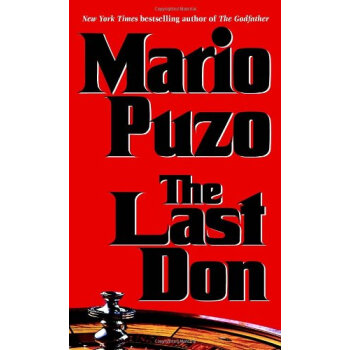
![David Copperfield [精装] pdf epub mobi 电子书 下载](https://pic.windowsfront.com/19525140/5469869fN454cb1ed.jpg)
